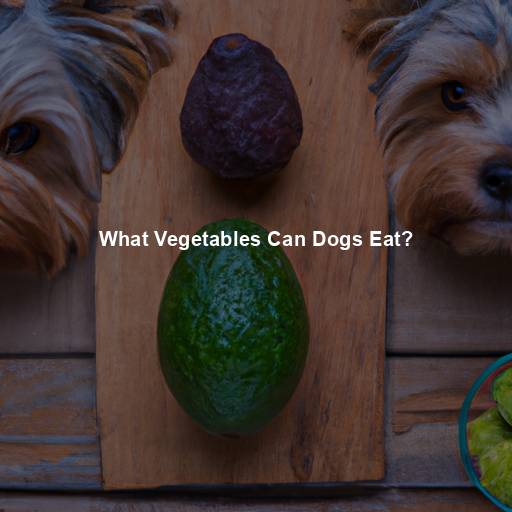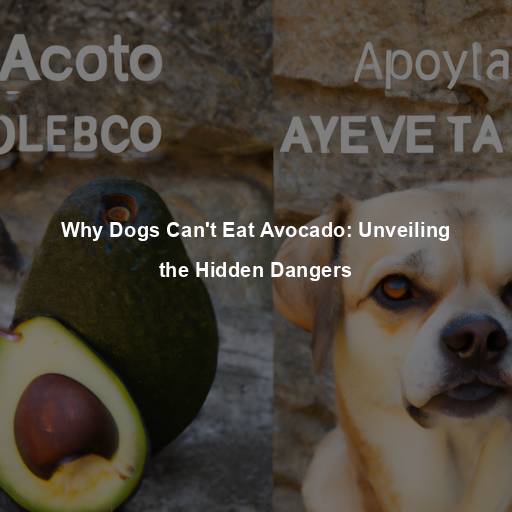What Vegetables Can Dogs Eat?
Last Updated on October 30, 2023 by Evan
Contents
- 0.1 Gradual
- 0.2 Proper Preparation
- 0.3 Consulting with a Veterinarian
- 0.4 A Natural Source of Nutrients
- 0.5 Enhancing Digestion and Regularity
- 0.6 Supporting a Healthy Weight
- 0.7 Antioxidant Power
- 1 Exploring More Dog-Friendly Vegetables
- 2 Understanding Potential Risks and Precautions
- 3 Incorporating Vegetables into Your Dog’s Meals
- 4 Final Thoughts
- 5 FAQs – What Vegetables Can Dogs Eat?
- 5.1 What vegetables can dogs eat?
- 5.2 Are all vegetables safe for dogs?
- 5.3 Can dogs eat tomatoes?
- 5.4 Can dogs eat onions and garlic?
- 5.5 Can dogs eat potatoes?
- 5.6 Can dogs eat leafy greens like spinach and lettuce?
- 5.7 Can dogs eat corn?
- 5.8 Should I consult my veterinarian before adding new vegetables to my dog’s diet?
Gradual
As pet owners, we are always on the lookout for ways to enhance our furry friends’ nutrition. If you’re considering introducing some new veggies into your dog’s diet, it’s crucial to navigate this green territory with caution. By taking small steps and closely monitoring your pup’s reactions, you can savor the satisfaction of seeing them gobble up these wholesome delights. Remember, patience is key when unlocking the wonders of a well-balanced canine diet!
Proper Preparation
Taking care of your furry friend’s dietary needs can be quite the puzzle, especially when it comes to vegetables. Ensuring their safety and digestibility requires a dash of ingenuity and a sprinkle of precaution. Remember to give those veggies a good scrub to rid them of any unwanted pesticides or dirt. And here’s the secret ingredient: depending on the veggie in question, consider peeling or cooking it to make it easier on your pup’s tummy and avoid any unexpected hurdles along the way.
Consulting with a Veterinarian
No two dogs are alike, each one having their own distinctive requirements when it comes to nutrition. If you find yourself grappling with uncertainties regarding your furry friend’s diet or overall well-being, reaching out to a trusted veterinarian is undoubtedly your best course of action. These highly-skilled professionals possess the expertise needed to provide tailored guidance based on factors such as your dog’s age, breed, size, and any pre-existing health issues they may have. Embrace the peace of mind that comes from seeking expert advice and ensure your beloved pet receives the optimal care they deserve.
A Natural Source of Nutrients
Vegetables offer a natural source of essential nutrients that can support various aspects of a dog’s health. They contain vitamins, minerals, and antioxidants that contribute to a strong immune system, healthy digestion, and overall well-being. While dogs have different dietary requirements than humans, incorporating safe and appropriate vegetables into their meals can provide valuable nutritional benefits.
Enhancing Digestion and Regularity
The fiber content in vegetables can aid in digestion and promote regular bowel movements for dogs. Leafy greens, such as spinach and kale, are particularly beneficial in this regard. The fiber in these vegetables adds bulk to the stool and can help prevent constipation. Additionally, fiber can contribute to a healthy gut microbiome, supporting optimal digestion and nutrient absorption.
Supporting a Healthy Weight
There’s a fascinating connection between our furry friends and veggies – turns out, certain vegetables can work wonders when it comes to managing the weight of our beloved four-legged companions. Think about it – carrots, green beans, and peas, those humble superheroes of the veggie world, are not only low in calories but also packed with fiber. By introducing these nutritional powerhouses into your dog’s diet as snacks or meal boosters, you’re not only satisfying their appetite but also taking concrete steps towards warding off obesity and promoting a balanced weight for your furry companion. It’s like giving your pooch a weight management secret weapon straight from Mother Nature’s pantry!
Antioxidant Power
Discover the hidden power of nature’s colorful gems for your furry companion’s ultimate wellness! The extraordinary presence of antioxidants in radiant vegetables like sweet potatoes and leafy greens awakens an enchanting shield against the bewildering forces of oxidative stress. Witness the mesmerizing dance of these brave antioxidants as they valiantly neutralize menacing free radicals, soothe inflammations, and ignite a symphony of cellular vitality. Embrace the kaleidoscope of vibrant hues present in your dog’s diet and unlock a tapestry of antioxidant wonders, woven just for their flourishing existence.
Exploring More Dog-Friendly Vegetables
Broccoli
Broccoli is a nutrient-packed vegetable that can be a valuable addition to your dog’s diet. It contains vitamins A, C, and K, as well as folate and fiber. However, it’s important to note that some dogs may have difficulty digesting broccoli, which can lead to digestive upset or gas. If you decide to introduce broccoli to your dog, start with small quantities and monitor their response.
Zucchini
Zucchini, a true gem among low-calorie vegetables, holds a tantalizing secret for our four-legged companions. Brimming with the nourishing embrace of vitamins A and C, alongside the mighty duos of potassium and fiber, this green wonder unveils a world of healthy snacking possibilities. Gently steamed or lovingly cooked, zucchini gracefully dances its way into your dog’s bowl, delivering not only delectable flavors but also a refreshing burst of hydration and vital nutrients. Yet, in this culinary adventure, it is of utmost importance to tread lightly, abstaining from the lure of tempting spices and oils that might leave our loyal friends perplexed and alarmed.
Cucumbers
Looking for a way to keep your furry friend cool and hydrated this summer? Look no further than cucumbers! These crisp and refreshing veggies are not only low in calories, but also packed with water to quench your dog’s thirst. Plus, they’re a great source of vitamins K and C, as well as silica for a healthy skin and coat.
Bell Peppers
When it comes to canine cuisine, bell peppers are one vibrant veggie that adds a delightful crunch to your furry friend’s bowl. With a colorful ensemble of red, green, or yellow options, these nutrient powerhouses deliver a burst of vitamins A, C, and E along with a dose of antioxidants. Whether served au naturel or with a gentle sauté, these peppers bring zesty flavor to your pup’s palate. Remember, though, just like humans, some pups may find peppers a bit perplexing on their tummies, so introduce them cautiously and keep an eye on their reaction.
Understanding Potential Risks and Precautions
Allergic Reactions
While vegetables are generally safe for dogs, individual sensitivities and allergies may exist. It’s essential to monitor your dog for any signs of allergic reactions when introducing new vegetables into their diet. Symptoms may include itching, rashes, swelling, vomiting, or diarrhea. If you suspect an allergic reaction, discontinue the vegetable and consult your veterinarian.
Toxic Vegetables and Parts to Avoid
In addition to onions, garlic, tomatoes, and avocados, there are a few other vegetables that can be toxic to dogs. These include mushrooms, rhubarb, and certain parts of plants like the leaves and stems of potato plants. It’s crucial to be aware of these potential hazards and ensure your dog does not have access to them.
Moderation is Key
While vegetables offer numerous nutritional benefits, it’s important to remember that they should not replace the primary protein source in a dog’s diet. Dogs are primarily carnivores, and their bodies require animal-based proteins to thrive. Vegetables should be seen as a supplement to their diet, providing additional nutrients and variety.
Incorporating Vegetables into Your Dog’s Meals
Mixing with Regular Food
Enhancing the nutritional paw-sibilities for our beloved canines takes some creativity. Consider embarking on a vibrant culinary adventure by unveiling the wonders of incorporating vegetables into their daily feasts. By artfully chopping or transforming these nourishing plant-based treasures into puree, we can seamlessly blend them with their regular kibble or wet food, adding a burst of perplexing flavors that will surely stimulate their taste buds. As our furry companions embark on this journey, let us gradually escalate the veggie count, giving them ample time to acclimate to this new realm of gustatory sensations.
Homemade Treats
Another option is to make homemade dog treats using dog-friendly vegetables. There are plenty of recipes available that use vegetables like sweet potatoes, carrots, and pumpkin as the main ingredients. Just make sure to avoid using any harmful seasonings or ingredients, such as onions or garlic.
Consulting a Professional
If you’re unsure about the best way to introduce vegetables into your dog’s diet or have specific concerns about their nutritional needs, consult a professional. A veterinarian or a qualified canine nutritionist can provide personalized guidance based on your dog’s unique requirements.
Final Thoughts
Discover the secret to unlocking the ultimate health journey for your furry friend: vegetables! Yes, you heard it right – these green, leafy wonders hold the power to transform your dog’s well-being. From the colorful crunch of carrots to the velvety richness of sweet potatoes, there’s a bounty of choices waiting to be explored. But hold on to your leashes – introducing these veggie delights requires patience and caution.
FAQs – What Vegetables Can Dogs Eat?
What vegetables can dogs eat?
Dogs can eat a variety of vegetables that are safe and healthy for them. Some examples of vegetables that are safe for dogs to consume include carrots, green beans, broccoli, spinach, sweet potatoes, and peas. These vegetables can be served either cooked or raw, depending on your dog’s preferences and digestive system. However, it’s important to introduce new vegetables gradually to your dog’s diet and observe if they have any adverse reactions.
Are all vegetables safe for dogs?
Not all vegetables are safe for dogs to eat. Some vegetables, such as onions, garlic, and mushrooms, can be toxic and should be avoided. These vegetables contain compounds that can cause damage to a dog’s red blood cells, gastrointestinal upset, or even organ failure. It’s crucial to do thorough research or consult with your veterinarian before introducing any new vegetables to your dog’s diet to ensure their safety.
Can dogs eat tomatoes?
While tomatoes are technically a fruit, they can be a topic of debate when it comes to feeding dogs. The fruit itself is not considered toxic to dogs, but the green parts and stems of tomatoes contain a substance called solanine which can be harmful if ingested in large quantities. It is best to remove all green parts and stems before giving your dog tomatoes, and feed them in moderation. Additionally, some dogs may have difficulty digesting tomatoes, so it’s important to monitor your dog for any adverse reactions.
Can dogs eat onions and garlic?
No, dogs should not be fed onions or garlic. Both onions and garlic contain compounds that can cause damage to a dog’s red blood cells, leading to a condition called hemolytic anemia. It’s important to note that even small amounts of onions or garlic can be harmful, and their toxicity can be cumulative over time. Therefore, it is best to avoid feeding any foods that contain onions or garlic to your dog, including seasonings and certain human foods.
Can dogs eat potatoes?
Potatoes for dogs? It might seem like a puzzling subject, but with a touch of caution in the kitchen, your furry friend can indeed indulge in this starchy delight. Nevertheless, let’s not forget the twist in this tale – raw and green potatoes can pack a harmful punch for our canine companions, as they contain solanine, a substance that can be toxic. So, to navigate these potato perils, it’s vital to whip up a culinary masterpiece by cooking those tubers thoroughly. And here’s another culinary cliffhanger – beware of the extra add-ons like oils, butter, and spices, as they might not be a treat for your pooch’s tummy. Stick to plain boiled or mashed potatoes for a tantalizing yet safe adventure for your furry buddy.
Can dogs eat leafy greens like spinach and lettuce?
There’s been quite a buzz recently about whether or not dogs can munch on leafy greens. Well, the verdict is in – they totally can! Spinach and lettuce make for some healthy and crunchy treats for your furry friend, but remember, moderation is key. Be sure to remove any tough stems that could wreak havoc on your pup’s delicate digestive system, and take it easy on the iceberg lettuce, which is basically the equivalent of a nutritional snooze fest. As always, introduce new leafy greens slowly and keep an eye out for any unexpected reactions. Happy snacking, Fido!
Can dogs eat corn?
When it comes to our furry friends, there’s always a mix of opinions and conflicting information. Corn, for example, is a topic that can raise eyebrows and spark uncertainty among dog owners. However, when given in moderation and in its cooked form, corn is generally safe for dogs to consume. It’s crucial, though, to ensure that the corn is plain and free of any harmful additives. While corn may not be the most nutritious option for our canine companions, a small serving here and there is unlikely to cause harm. Nonetheless, it’s important to be mindful of any potential digestive issues or allergies that your dog may experience, and consulting with a veterinarian is always a wise move.
Should I consult my veterinarian before adding new vegetables to my dog’s diet?
Yes, it is always recommended to consult with your veterinarian before introducing new vegetables or any significant dietary changes to your dog’s routine. They can provide you with specific advice based on your dog’s individual needs, health conditions, and any potential allergies they may have. Your veterinarian can guide you on suitable portion sizes, potential preparation methods, and help ensure that the vegetables you choose are safe and beneficial for your dog’s overall well-being.







